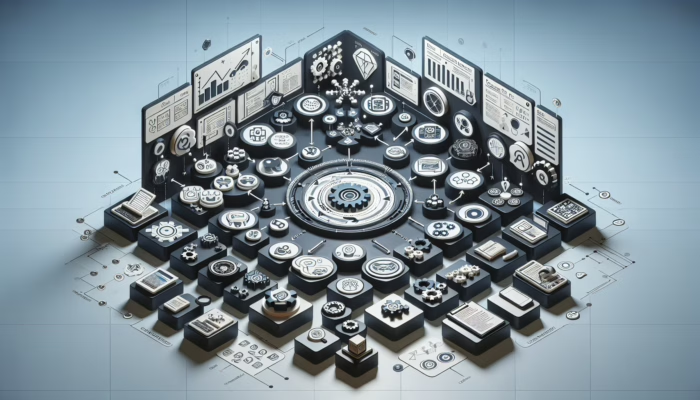Revolutionise Your Hearing Aids with Advanced 5G Connectivity
The introduction of 5G technology marks a transformative period for hearing aids, fundamentally altering their functionality and user interaction. In our fast-paced environment, where effective communication is essential, 5G not only enhances sound clarity but also elevates hearing aids to intelligent devices capable of adapting to diverse surroundings. This upgraded connectivity offers numerous benefits, particularly for those facing hearing challenges, allowing them to engage more fully with both their immediate environment and the broader digital realm.
Unlock Real-Time Audio Streaming Features with 5G

Imagine the revolutionary capability to stream audio in real-time, essentially transforming a hearing aid into a vital component of your auditory experience. With the power of 5G connectivity, this dream is now a reality. The incredibly low latency and extensive bandwidth associated with <a href="https://www.earwaxremoval.net/microsuction-clinic-locations/north-london-private-microsuction-ear-wax-removal-mill-hill-nw7/">5G</a> allow hearing aids to receive and process audio signals almost instantaneously. Users can enjoy pristine sound quality from a multitude of sources, including smartphones, televisions, and even live concerts. This groundbreaking feature significantly enriches the listening experience, making it more immersive and pleasurable.
The seamless connectivity provided by 5G enables users to make phone calls effortlessly through their hearing aids, eliminating the need for intermediary devices. This streamlined experience facilitates fluid interaction with the digital landscape. Beyond voice calls, engaging with music or podcasts becomes notably more intimate, as the sound quality is substantially elevated, creating a richer auditory experience that truly captivates users.
Furthermore, the capability for real-time data streaming empowers hearing aids to collect valuable information regarding the user’s listening habits and surrounding conditions. When combined with sophisticated AI algorithms, this data can be harnessed to make dynamic adjustments, ensuring that sound quality is tailored to meet each user’s unique preferences and needs. This level of personalisation not only enhances user satisfaction but also improves the overall functionality and effectiveness of the device.
Extend Battery Life with Innovative 5G Solutions
The arrival of 5G technology also tackles a major concern for hearing aid users: battery longevity. Traditional hearing aids often struggle with power consumption, especially when connecting to multiple devices at once. Fortunately, 5G technology enables hearing aids to manage energy consumption more efficiently, allowing users to enjoy extended performance without frequent interruptions for recharging.
By deploying advanced power management algorithms, 5G-enabled devices can smoothly transition between various connectivity modes, optimising energy use based on user activity. For example, during quieter moments, hearing aids can shift into a low-power mode while maintaining network connectivity. This innovation significantly prolongs battery life, enabling users to experience uninterrupted usage for longer periods, thereby enhancing their daily lives.
Moreover, the reduced energy requirements associated with 5G technology enable manufacturers to focus on designing smaller, more efficient batteries without compromising performance. This leads to sleeker designs and improved comfort while still delivering functionality. Users can now confidently enjoy a full day of usage without the anxiety of power depletion, greatly enhancing their overall quality of life.
Effortless Integration with Smart Devices Using 5G
One of the most remarkable features of 5G technology is its potential for seamless integration with a wide range of smart devices. The interconnected nature of 5G enables hearing aids to communicate effortlessly with various technologies, including smartphones, smart home devices, and wearables, creating a cohesive ecosystem that significantly elevates the user experience.
For instance, a user can effortlessly sync their hearing aids with their smartphone’s GPS navigation application. As they navigate through vibrant urban landscapes, their hearing aids can automatically adjust sound levels based on surrounding noise, ensuring they remain alert to critical auditory cues. This level of integration enhances safety and convenience, particularly for individuals who may have previously faced challenges in hearing important alerts in noisy environments.
Additionally, the capacity of 5G to support multiple simultaneous connections allows users to interact with several devices concurrently. Whether it’s receiving notifications from social media platforms or answering incoming calls, the fluidity of the user experience transforms everyday tasks, making them considerably more manageable. This integration not only simplifies life for individuals but also fosters a sense of independence, empowering users to engage with technology in the most meaningful ways.
Enhancing Audio Quality in Hearing Aids with 5G Technology

The improvements in audio quality enabled by 5G technology are truly revolutionary. As hearing aid technology advances, the advantages of 5G become increasingly evident, providing users with a significantly enhanced auditory experience that far surpasses traditional capabilities. This shift markedly improves how users perceive and engage with sounds in their daily lives.
Experience Minimal Latency for Enhanced Clarity in Sound
Latency often presents a considerable challenge for hearing aid users, particularly in noisy and crowded environments. Thanks to the exceptionally low latency offered by 5G technology, the possibility of audio synchronisation issues is greatly diminished. This improvement is particularly beneficial in scenarios where users need to distinguish speech amid distracting background noise, such as in bustling restaurants or crowded public transport systems.
With the advantages of reduced latency, sounds from televisions or smartphones are transmitted to hearing aids almost instantly, ensuring that users are not left struggling to keep pace with conversations or audio cues. The real-time processing capabilities afforded by 5G enable users to focus on the sounds that matter most, thereby significantly enhancing their overall auditory experience.
Moreover, this immediate responsiveness not only benefits one-on-one conversations but also improves communication during group discussions, where multiple voices might compete for attention. Consequently, users can engage more fully, fostering improved social interactions and bolstering confidence in various settings.
Immerse Yourself in High-Definition Sound Quality
5G technology empowers hearing aids to deliver an unparalleled high-definition sound quality—the kind of audio performance that transforms the listening experience. With the extensive bandwidth provided by 5G, hearing aids can process and convey richer, more nuanced audio that closely mirrors the natural sounds of life.
This enhancement allows users to perceive subtleties they may have previously overlooked, from the gentle rustling of leaves to the intricate harmonies of orchestral music. The introduction of high-definition sound alters entertainment experiences, making listening to music or watching films a profoundly immersive journey. Users can enjoy depth and clarity, further enriching their daily interactions with the world around them.
Furthermore, high-definition sound is critical for users with varying degrees of hearing loss. The ability to customise frequencies and sound profiles is vital, enabling users to tailor their auditory experience to suit their individual hearing profiles. This adaptability ensures that every user can discover their ideal sound, leading to heightened satisfaction and an enhanced quality of life.
Personalise Your Sound Profiles for a Tailored Experience

The capabilities of 5G technology enable hearing aids to offer customizable sound profiles that adapt seamlessly to individual preferences and environmental conditions. Users can effortlessly adjust their settings via dedicated smartphone applications, ensuring that their devices align perfectly with their specific auditory needs and desires.
This level of personalisation is especially beneficial in varied environments. For example, a user can modify their hearing aid settings to prioritise conversations during meetings or minimise background noise while enjoying a live concert. The flexibility afforded by 5G allows for swift adjustments, empowering users to take control of their auditory experiences.
Additionally, advancements in sound processing technology mean that users can benefit from machine learning algorithms that learn from their preferences over time. As users interact with their devices, the system can suggest optimal sound settings based on previous behaviours and environmental contexts. This degree of personalisation significantly enhances user satisfaction, making hearing aids not merely devices but essential companions tailored to individual lifestyles.
Enhanced Noise Cancellation for Superior Listening Experiences
The evolution of noise cancellation technology has made remarkable advancements with the introduction of 5G technology. Enhanced algorithms powered by the rapid data transfer capabilities of 5G enable hearing aids to filter out disruptive background sounds more effectively. This improvement is crucial for users navigating noisy environments, such as busy cafes or bustling city streets.
By employing advanced sound processing techniques, hearing aids can better identify and isolate speech from surrounding noise. This capability allows users to engage in conversations without the constant distraction of competing sounds, significantly augmenting their social interactions and overall auditory experience.
Moreover, enhanced noise cancellation extends beyond simple audio adjustment. With real-time processing, hearing aids can continually adapt to changing environments, ensuring that users maintain control over what they hear. The result is a substantially improved listening experience that empowers users to navigate their surroundings with confidence and ease.
Enjoy Real-Time Audio Adjustments for Enhanced Clarity
The ability to make real-time audio adjustments stands out as one of the most significant benefits of 5G technology in hearing aids. As users transition through different environments—whether moving from a peaceful home to a bustling street—hearing aids equipped with 5G can instantaneously adapt to optimise sound quality.
This functionality is essential for maintaining clarity and enhancing user comfort. Users can enjoy uninterrupted audio fidelity, as their devices make immediate adjustments based on ambient noise levels and other factors. This responsiveness fosters a more engaged experience, allowing users to focus on the conversations and sounds that matter most to them.
Moreover, real-time audio adjustments significantly enhance safety, particularly in social situations. Users can remain vigilant to critical environmental cues, such as traffic sounds or alerts in crowded venues, without sacrificing the clarity of conversations. This balance between auditory engagement and situational awareness empowers users to navigate their environments with greater confidence and independence.
Transforming Telehealth and Remote Adjustments for Hearing Aids
As technology progresses, the impact of 5G technology unveils new opportunities for telehealth and remote adjustments in hearing aids. This evolution not only enhances accessibility but also offers users a more convenient and supportive experience in managing their hearing health.
Effortlessly Access Virtual Hearing Assessments
5G technology facilitates virtual hearing assessments, enabling users to receive professional evaluations without the need to physically attend a clinic. This accessibility is especially advantageous for individuals living in remote areas or those with mobility limitations. With just a smartphone and a reliable internet connection, users can connect with audiologists for comprehensive assessments.
These virtual evaluations provide users with the chance to discuss their experiences, voice any concerns, and receive immediate feedback regarding their auditory health. The convenience of telehealth in the hearing sector signifies a substantial advancement, breaking down barriers to access and allowing users to prioritise their hearing needs from the comfort of their homes.
Moreover, virtual assessments can lead to more timely interventions when issues arise. Users can receive prompt recommendations, adjustments to their devices, or referrals to specialists without the delays often associated with traditional appointments. This efficiency significantly enhances overall user satisfaction and encourages active engagement with hearing health services.
Personalised Remote Device Tuning for Enhanced Adjustments
The ability for audiologists to perform remote device tuning through 5G technology represents a significant leap forward in hearing technology. Users no longer need to book multiple office visits for adjustments; instead, audiologists can modify settings remotely, optimising performance based on user feedback.
This convenience is invaluable, especially for those living far from hearing clinics. With remote tuning, users can receive personalised adjustments tailored to their evolving needs without the stress of travel or scheduling conflicts.
Furthermore, remote tuning benefits not only initial adjustments but also ongoing maintenance. As users encounter different listening environments, their audiologists can make real-time changes to ensure optimal performance. This flexibility fosters a sense of partnership between the user and the audiologist, leading to improved outcomes and greater satisfaction with hearing solutions.
Engage in Telemedicine Consultations for Continuous Support
The rise of telemedicine in the hearing health sector, powered by 5G technology, allows users to access medical consultations without leaving their homes. This development is particularly beneficial for users requiring ongoing support, adjustments, or guidance regarding their hearing aids.
Telemedicine consultations provide a platform for users to discuss their experiences, pose questions, and receive professional advice in a familiar setting. This accessibility creates a comfortable environment for users, promoting open communication about their hearing health.
Additionally, telemedicine reduces wait times for appointments and enables practitioners to reach a broader audience. As hearing health services become increasingly accessible, users are more likely to seek assistance and maintain their hearing aids effectively. This proactive approach to hearing health ensures that individuals receive the necessary care, ultimately leading to better outcomes.
Exploring Innovative Trends in Hearing Technology
With the rise of 5G technology, innovations in hearing technology have surged, introducing smarter and more capable devices to users worldwide. The integration of AI, wearable technology, and 5G connectivity paves the way for an exciting future in hearing aids, promising enhanced features and improved user experiences.
Adopt Smart Hearing Aids for Enhanced Connectivity
The 5G revolution has catalysed the development of smart hearing aids equipped with advanced features and connectivity options. These devices are designed not only to improve hearing but also to enhance the overall quality of life for users. The incorporation of smart technologies allows hearing aids to become integral components of a broader ecosystem, connecting with various smart devices to deliver a unified user experience.
Smart hearing aids can learn from user behaviour, adjusting settings based on preferences and environmental changes. This level of intelligence ensures that users benefit from personalised sound experiences that evolve with their needs. The result is a device that not only amplifies sound but also enriches the user’s interaction with the world around them.
Furthermore, the connectivity provided by smart hearing aids enables seamless integration with smartphones and other devices. Users can manage their hearing aids through intuitive applications, allowing them to customise settings, adjust sound profiles, and monitor their hearing health all from a single platform. This convenience empowers users to take control of their hearing experiences.
Utilise AI-Powered Sound Processing for Enhanced Clarity
Artificial intelligence (AI) plays a vital role in elevating the sound processing capabilities of hearing aids, particularly when combined with the connectivity afforded by 5G technology. AI algorithms can analyse audio inputs in real-time, distinguishing between relevant sounds and background noise to prioritise essential auditory cues.
This advancement is especially crucial for users in complex auditory environments, such as crowded restaurants or public events. AI-powered sound processing enables hearing aids to focus on speech, ensuring that users can follow conversations without being overwhelmed by competing sounds.
Additionally, AI can continuously learn and adapt based on user preferences and behaviours. As users engage with their devices, the AI identifies patterns and suggests optimal settings for different environments. This personalised approach to sound processing enhances user satisfaction, creating a more natural and engaging listening experience.
Experience Wearable Integration for a Holistic Health Approach
5G technology facilitates the integration of hearing aids with various wearables, creating a more cohesive and interconnected user ecosystem. Imagine a world where hearing aids work seamlessly with smartwatches, fitness trackers, and health monitoring devices. This integration not only enhances functionality but also offers users comprehensive health data.
For example, users can receive notifications from their smartwatches directly through their hearing aids, allowing them to stay connected without distraction. Moreover, fitness trackers can monitor health metrics like heart rate or physical activity, providing valuable insights that can be shared with audiologists for a holistic approach to hearing health.
These integrations not only enhance the functionality of hearing aids but also promote a more active lifestyle. Users can remain engaged with their surroundings while benefiting from the advantages of multiple connected devices. This interconnectedness fosters a sense of empowerment, enabling users to take charge of their health and well-being comprehensively.
Promoting Accessibility and Inclusivity in Hearing Technology
The impact of 5G technology significantly enhances accessibility and inclusivity in hearing technology, ensuring that individuals from diverse backgrounds and abilities can benefit from innovative solutions. The democratisation of technology has far-reaching implications for public health and social engagement, creating opportunities for all.
Expand Access to Advanced Hearing Technology
One of the most remarkable advantages of 5G technology is the expansion of access to advanced hearing technology. With improved connectivity and reduced costs, more individuals can now access hearing aids and related services than ever before. This inclusion is particularly crucial in underserved communities, where traditional access to hearing health services may be limited or entirely absent.
As hearing technology becomes more accessible, individuals with hearing loss can engage more fully in educational, professional, and social activities. Effective communication is vital for personal and professional growth, and enhanced access empowers individuals to pursue their ambitions with confidence and determination.
Moreover, as technology becomes more affordable, manufacturers can produce a wider range of hearing aids tailored to different budgets and needs. This commitment to inclusivity ensures that hearing solutions are available to a broader audience, fostering a more equitable society where everyone has the chance to thrive.
Affordable Hearing Solutions for Everyone
Thanks to advancements driven by 5G technology, manufacturers can now produce more cost-effective hearing aids without compromising on quality. This shift is pivotal for reaching individuals who may have previously been excluded from the market due to high costs.
The reduction in costs can be attributed to enhanced manufacturing processes and the ability to streamline production, thanks to technological advancements. As a result, hearing aids are increasingly viewed not as luxury items but as essential health devices that can significantly improve quality of life.
Additionally, insurance companies and healthcare providers may be more inclined to cover 5G-enabled hearing aids, recognising their potential to improve overall health outcomes. This increased affordability allows more individuals to seek the help they need, ultimately leading to better hearing health and enhanced life satisfaction.
Elevate User Experience with Enhanced Features
The advancements brought about by 5G technology significantly improve the overall user experience of hearing aids. As devices become more sophisticated and user-friendly, individuals are more likely to embrace them as indispensable tools in their daily lives.
Improvements in connectivity and sound quality directly translate into heightened user satisfaction. With personalised features, seamless integration, and real-time adjustments, users experience a greater sense of control over their auditory environments. This empowerment encourages individuals to engage more fully in conversations and social activities, ultimately enhancing their overall quality of life.
Moreover, as the stigma surrounding hearing aids continues to diminish, users are more inclined to adopt these technologies with enthusiasm. The modern design and advanced capabilities of 5G-enabled hearing aids make them appealing to a wider audience, promoting acceptance and integration into everyday life.
Enhance Connectivity and Support Services
The connectivity provided by 5G technology enhances remote support and connectivity for hearing aids, significantly improving accessibility and inclusivity. With the ability to connect to audiologists and support services from virtually anywhere, users can receive assistance whenever they need it.
This level of support is especially valuable for users in remote or underserved areas. With telehealth options available, individuals can access necessary assistance without travelling long distances or facing lengthy wait times. This convenience encourages proactive engagement in hearing health, ensuring that users receive timely interventions when necessary.
In addition, improved connectivity allows users to stay informed about the latest advancements in hearing technology. Awareness of new products, features, and services empowers individuals to make informed decisions regarding their hearing health, leading to better outcomes and enhanced quality of life.
Addressing Challenges and Considerations in Hearing Technology
Despite the multitude of benefits provided by 5G technology in hearing aids, several challenges and considerations must be addressed to ensure responsible and sustainable advancements. As technology evolves, it is essential to recognise potential barriers and work towards solutions that benefit all users.
Security and Privacy Challenges in Connected Devices
The increased connectivity offered by 5G technology introduces new security and privacy challenges for hearing aid users. With devices consistently connected to the internet, there exists an inherent risk of unauthorised access and potential data breaches.
Hearing aids frequently collect sensitive information about users, including their location and listening habits. Ensuring that this data remains secure is paramount for manufacturers and service providers. Implementing strong encryption methods and security protocols is crucial for protecting user privacy and maintaining trust in these devices.
Moreover, users must be educated about potential risks and how to safeguard their personal information. As technology advances, ongoing discussions concerning privacy and security will be vital in establishing guidelines and best practices for protecting users.
Infrastructure Requirements for Effective 5G Deployment
The potential benefits of 5G technology for hearing aids heavily rely on the availability of robust infrastructure. In many areas, particularly rural or underserved regions, the necessary infrastructure may not yet exist to support 5G connectivity.
Without reliable access to 5G networks, the advantages of smart hearing aids may remain unrealised, creating disparities in access to cutting-edge technology and leaving some users without the benefits they deserve. Therefore, investment in infrastructure development is crucial to ensure equitable access to hearing technology across diverse populations.
Additionally, as the demand for hearing aids escalates, manufacturers must collaborate with telecommunications providers to ensure that networks can accommodate the required data traffic. This collaboration is essential for delivering a seamless user experience and maximising the potential of 5G technology.
Overcoming Adoption Barriers for New Technology
Even with the numerous advantages of 5G-enabled hearing aids, various adoption barriers may inhibit users from fully embracing this technology. Cost remains a significant factor, as even affordable devices may still be out of reach for some individuals.
Moreover, awareness and education play critical roles in driving adoption. Many individuals may not fully comprehend the benefits of 5G technology or how it can enrich their hearing experience. Educational campaigns and outreach initiatives can help bridge this gap, ensuring that users are informed about their options and the positive impact of technology on their hearing health.
Furthermore, older adults, who are often the primary users of hearing aids, may be more resistant to change. Providing support and education tailored to this demographic can help alleviate concerns, encouraging greater acceptance of new technologies.
Ensuring Regulatory Compliance in Evolving Technologies
As hearing aids evolve to integrate 5G technology, ensuring compliance with various international standards and regulations can be complex. Manufacturers must navigate a landscape of regulations that differ by region and may change as technology progresses.
Establishing consistency in compliance standards is vital for maintaining user safety and device efficacy. Manufacturers must collaborate closely with regulatory bodies to ensure that their devices meet essential guidelines and regulations, fostering trust and confidence among users.
Additionally, as new technologies emerge, regulatory frameworks must adapt to address the unique challenges posed by connectivity and data collection. This ongoing collaboration is crucial for fostering innovation while ensuring user safety and privacy.
Addressing Battery Life and Power Management Challenges
As 5G technology enhances capabilities, it also raises concerns regarding battery life and power management in hearing aids. The power demands of 5G connectivity can strain battery life, necessitating that manufacturers develop solutions to ensure longevity without compromising performance.
Innovations in battery technology and power management systems are essential for overcoming these challenges. Manufacturers must prioritise creating efficient devices that leverage 5G capabilities while optimising energy consumption.
Moreover, users should be educated about best practices for maximising battery life. By understanding how to manage their devices wisely, users can enjoy the benefits of 5G technology without the inconvenience of frequent recharging.
Anticipating Future Prospects and Trends in Hearing Technology
Looking ahead, the future of 5G technology in hearing aids is filled with exciting prospects and trends that will continue to shape the auditory technology landscape. As 5G connectivity becomes increasingly prevalent, hearing aids will evolve to cater to the diverse needs of users around the globe.
Expect Ongoing Innovation in Hearing Solutions
The advancements propelled by 5G technology will stimulate continuous innovation in hearing technology, leading to the development of new features and capabilities that enhance user experiences. As research and development progress, we can anticipate even smarter devices that integrate more seamlessly into users’ lives.
For instance, future hearing aids may incorporate biometric sensors, enabling users to monitor their health metrics alongside their hearing. This holistic approach to health management aligns with the growing trend of integrated technology and personalised healthcare solutions.
Moreover, as AI technologies continue to evolve, we may witness advanced predictive capabilities that anticipate user needs in real-time. This level of intelligence will revolutionise how individuals engage with their hearing aids, enhancing overall satisfaction and involvement.
The potential for collaboration between manufacturers, audiologists, and users will also drive innovation. By fostering open communication and collaboration, stakeholders can work together to develop solutions that address real-world challenges and improve the user experience.
Commonly Asked Questions Regarding 5G and Hearing Aids
What is 5G technology and how does it function?
5G technology signifies the fifth generation of mobile network technology, providing faster speeds, lower latency, and enhanced connectivity compared to its predecessors. It enables seamless communication between devices and supports advanced applications that enrich user experiences.
How does 5G impact the functionality of hearing aids?
5G technology enhances hearing aids by offering real-time data streaming, improved battery life, and seamless integration with smart devices. It also significantly boosts audio quality and facilitates remote adjustments and virtual assessments, enriching the overall user experience.
Are 5G-enabled hearing aids more expensive than traditional options?
While the initial costs of 5G technology may lead to higher prices, it can ultimately lower manufacturing expenses, resulting in more affordable options over time. Economies of scale are likely to make 5G-enabled hearing aids accessible to a wider audience.
Can I connect my hearing aids to my smartphone?
Yes, many 5G-enabled hearing aids can connect seamlessly to smartphones, allowing users to stream audio, manage settings, and receive notifications directly through their devices, enhancing convenience and user experience.
What is telehealth in the context of hearing aids?
Telehealth for hearing aids refers to remote consultations and assessments conducted by audiologists via video calls or apps. This service enhances accessibility and allows users to receive convenient support without the need for in-person visits.
How do real-time audio adjustments function in hearing aids?
Real-time audio adjustments utilise advanced algorithms to analyse the auditory environment and dynamically alter hearing aid settings. This ensures optimal sound quality in various situations, significantly enhancing the user experience.
What advantages does AI provide in hearing aids?
AI enhances hearing aids by improving sound processing, enabling personalised adjustments, and learning user preferences over time. This results in a more tailored auditory experience, increasing user satisfaction and engagement.
Are there privacy concerns associated with 5G-enabled hearing aids?
Yes, the increased connectivity associated with 5G technology introduces potential privacy concerns regarding data collection and security. It is essential for manufacturers to implement robust security measures to protect user information and maintain trust.
How can I maximise battery life in my hearing aids?
To maximise battery life, users should manage connectivity settings, reduce streaming when unnecessary, and follow manufacturer guidelines for optimal usage and care practices.
What does the future hold for hearing technology with 5G?
The future of hearing technology with 5G technology looks promising, with ongoing innovation expected. We may see smarter devices with advanced features, improved integration with other technologies, and an overall enhanced user experience.
Explore our world on X!
The post 5G’s Influence on Hearing Technology: A New Era Emerges appeared first on The Microsuction Ear Wax Removal Network.
The post 5G’s Influence on Hearing Technology: A New Era Emerges appeared first on Healthcare Marketing Service.















